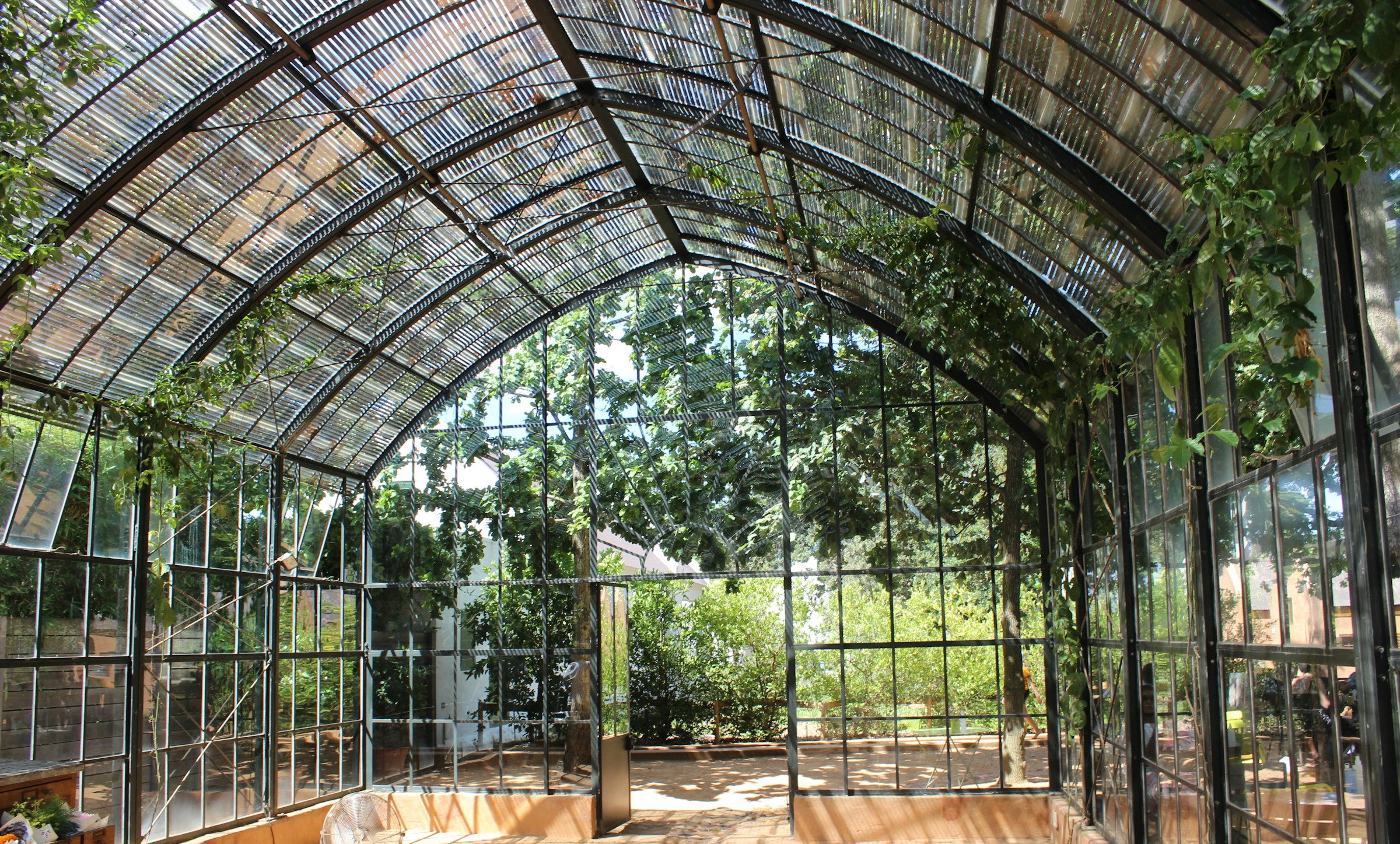What's the Best Way to Incorporate a Solarium for Year-Round Plant Growth?

Have you ever considered converting your sunroom into a greenhouse where you can grow your favourite plants all year round? Solariums, also known as sunrooms, can serve as the perfect indoor garden due to their glass structures that allow maximum sunlight penetration. Converting your sunroom into a greenhouse is easier than you might think, and the rewards are plentiful.
This article will guide you through the process, offering tips and tricks to ensure your plants get the best possible conditions for growth. We will discuss the benefits of growing plants in a sunroom, how to choose the best plants for this environment, and how to manage light, water, heat, and soil conditions in your indoor garden.
Avez-vous vu cela : What's the Best Way to Incorporate Natural Stone Features into a Modern Bathroom?
The Benefits of Growing Plants in a Sunroom
A sunroom is a room that is designed to be filled with light, making it the perfect space for an indoor garden. If you've been considering where to place your burgeoning plant collection, a sunroom provides an excellent solution.
The main advantage of growing plants in a sunroom is the abundant natural light that floods the space. Sunrooms, with their large windows and often glass ceilings, maximize sunlight exposure throughout the day. This consistent light source is essential for photosynthesis, the process by which plants convert light energy into chemical energy to fuel their growth.
En parallèle : What Are the Best Multi-Room Audio Systems for a Seamless Listening Experience?
Another benefit is temperature control. Sunrooms are typically warmer than other parts of the house due to the greenhouse effect. During the day, sunlight enters the room and is absorbed by the walls and floor, creating a warm environment, ideal for plant growth. Also, sunrooms can usually be isolated from the rest of the house, allowing for better heat management.
Choosing the Best Plants for Your Sunroom
Not all plants will thrive in a sunroom environment. The best plants for a sunroom are those that can handle high light levels and fluctuating temperatures. Tropical plants like orchids and bromeliads are excellent choices, as they can tolerate the heat and humidity that can accumulate in a sunroom. Succulents, such as cacti and aloe, are also well-suited for these light-filled spaces.
When choosing plants, consider their light and temperature needs. Some plants require direct sunlight, while others prefer indirect light. Similarly, some plants thrive in warmer conditions, while others need cooler temperatures. Research each plant's requirements before bringing them into your sunroom.
Managing Light Conditions in Your Sunroom
While sunrooms provide ample natural light, you may need to adjust the light conditions depending on the type of plants you want to grow. Too much direct sunlight can cause some plants to wilt, while not enough light can hinder growth.
Consider installing blinds or shades to control the amount of sunlight that enters the room. This way, you can adjust the light conditions as needed. You might also want to consider installing grow lights for plants that need extra light, especially during the shorter days of the year.
Monitoring the light conditions in your sunroom is crucial. Some signs that your plants are not getting enough light include slow growth, pale leaves, and elongated stems. On the other hand, leaves that are yellow, brown, or scorched may indicate too much light.
Watering and Soil Management in Your Sunroom
Proper watering and soil management are critical to the health of your plants. Many plants prefer a well-draining soil mix, which prevents water from sitting at the roots and causing rot. You may need to modify the soil depending on the specific needs of your plants.
When watering your plants, be careful not to overwater. Too much water can lead to root rot, a common plant disease. Check the soil's moisture level before watering – if the top inch of soil is dry, it's time to water.
Lastly, consider the humidity in your sunroom. Some plants – especially tropical varieties – prefer humid conditions. You can increase humidity by misting the plants or placing a tray of water near your plants.
With careful planning and a little green thumb, your sunroom can become a lush, vibrant indoor garden. Remember that each plant is unique and will have different needs when it comes to light, water, heat, and soil. Monitor your plants regularly and adjust conditions as needed to ensure they thrive in your sunroom. And most importantly, enjoy the process of growing your indoor garden.
Turning Your Sunroom into a Living Space
While solariums make wonderful spaces for indoor gardening, they can also double as beautiful and functional living spaces if designed correctly. By incorporating a few simple design elements, you can create a sunroom that is not only conducive to plant growth but is also a welcoming place for relaxation and entertainment.
For starters, comfortable seating is a must-have in any living space. Consider placing a few chairs or a sofa in your sunroom. Choose furniture made of materials that can withstand direct sunlight and fluctuating temperatures. Outdoor furniture often fits the bill and comes in a variety of stylish options these days.
Adding a table allows you to use the space for dining or working when the weather is pleasant. If you’re looking for a more relaxed vibe, a hammock or a daybed can make your sunroom feel like a getaway.
To blend the garden and living aspects, use plant stands, shelves, and hanging baskets to display your plants without compromising floor space. A vertical garden is another excellent way to display your indoor plants, adding a touch of greenery to your walls.
With some thoughtful arrangement, your sunroom can be a place where you can enjoy your morning coffee while observing the growing season change your garden sunroom through the large windows. It becomes an inviting outdoor living space that can be utilized for relaxation and entertainment year-round, while still allowing your plants to flourish.
Caring for Your Sunroom Plants: African Violets and Beyond
One of the joys of having a sunroom is expanding your indoor gardening horizons. While we’ve mentioned a few types of sunroom plants like orchids, bromeliads, and succulents, African violets are another excellent addition. These small, colorful plants thrive in the indirect light of a sunroom, and their blooming can add a pop of color to your indoor garden.
Regardless of the types of plants you choose, remember that they all require care and attention. Regular monitoring is essential as conditions in a sunroom can change rapidly. Keep an eye out for pests and diseases and deal with them promptly to prevent them from spreading to other plants.
Also, remember to feed your plants. Plants in a sunroom garden might consume nutrients faster than outdoor plants due to the accelerated growth from the constant light they receive. Regularly replenishing the nutrients in the potting soil will keep your plants healthy.
Remember, some plants go dormant during certain times of the year. If you notice a decrease in growth or flowering, check to see if it's the plant's natural growing season. If it isn't, the plant might need more light, water, or nutrients.
Incorporating a solarium for year-round plant growth can be a rewarding endeavor. Not only does it provide a conducive environment for a wide variety of plants to grow, but it also transforms your sunroom into a lush, green, and vibrant living space.
The possibilities are endless when it comes to indoor gardening in sunrooms. With ample natural light, controlled temperatures, and the opportunity to monitor your plants closely, you can experiment with different types of plants, from tropical varieties to succulents to colorful African violets.
Remember, the key to a successful sunroom garden is understanding the needs of your plants and providing them with the right conditions to grow. Make use of blinds to control direct sunlight, monitor soil moisture to prevent overwatering, and adjust temperature and humidity as needed.
In the end, whether you're a seasoned gardener or a green-thumb-in-training, the journey of turning your sunroom into a living, breathing garden is one that brings immense joy and satisfaction. So embrace the process, rejoice in the small victories, and above all, enjoy your very own indoor oasis!
